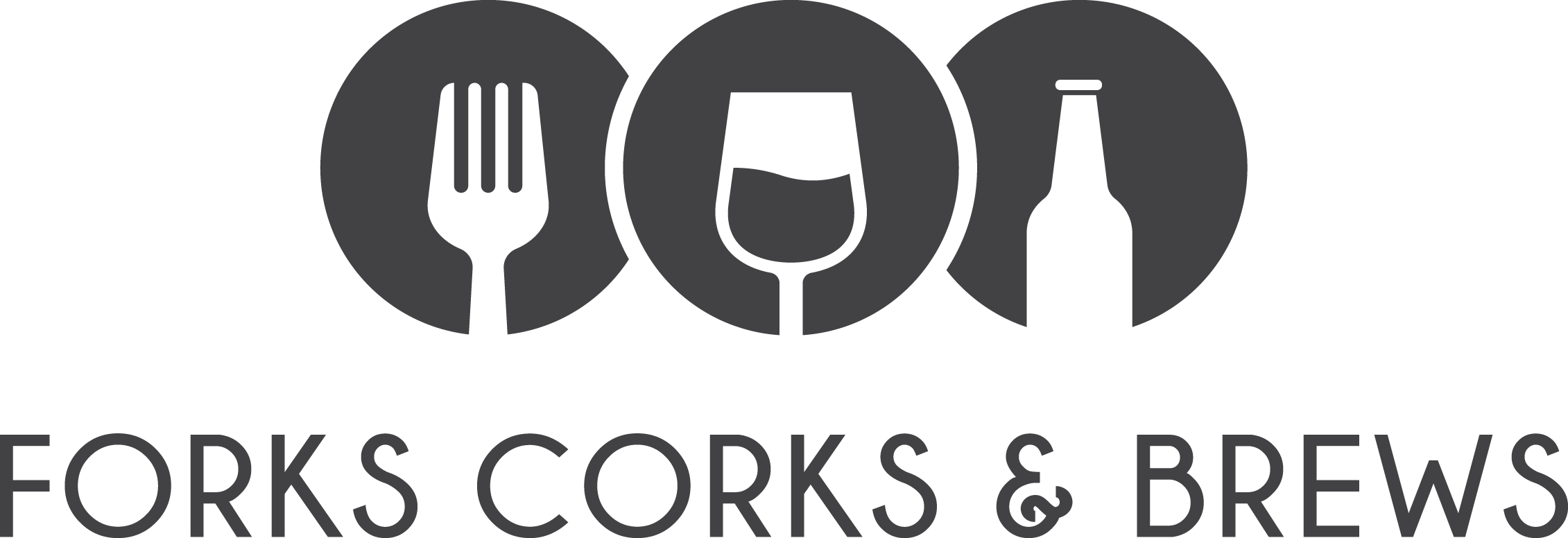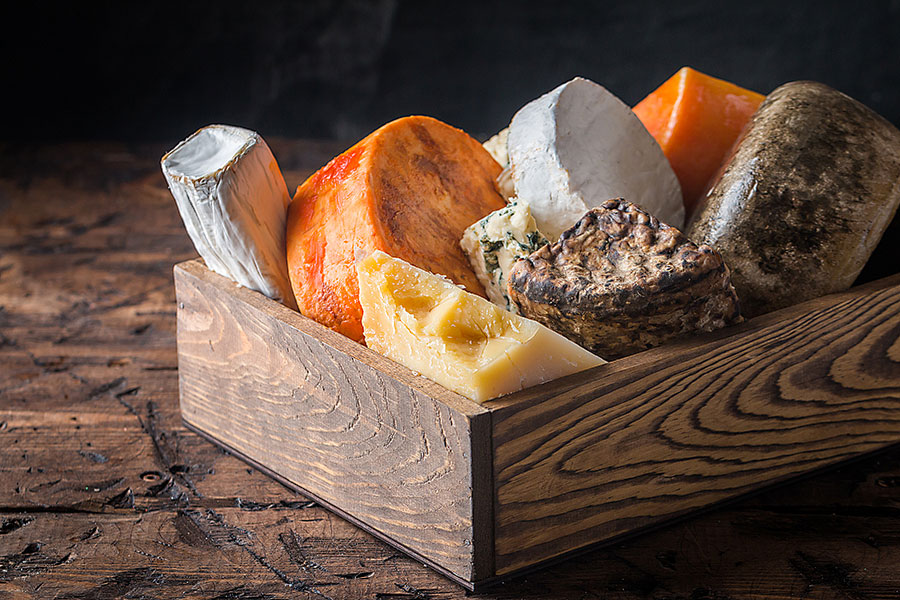Have you wondered what cheeses you should put on your charcuterie board? Are there some cheeses that work better than others? Should you think about jams and other foods that pair well with certain cheeses? Are there some wines that might work best with different cheeses?
Start here with Forks Corks and Brews to find the best type of cheese for a charcuterie board.
What Is the Best Kind of Cheese for a Charcuterie Board?
Before you head to your favorite cheese shop or grocery store here are some things to think about before you purchase cheese for your charcuterie board.
- How many guests are you serving
- Do you have favorite cheeses
- Do you dislike certain cheeses
- Are there any allergies you need to think about
- What other foods will be on your charcuterie board besides cheese
- Will your charcuterie board be simple or fancy
- How many types of cheeses should you include
- What size charcuterie board should you use
What Should I Know About Different Cheese Options?
Let’s take a look at a few common cheese options. Before you head to the store, take a look at these cheeses. We have outlined which ones are easy to find, and which ones will satisfy the majority of peoples’ palates.
Parmigiano Cheese
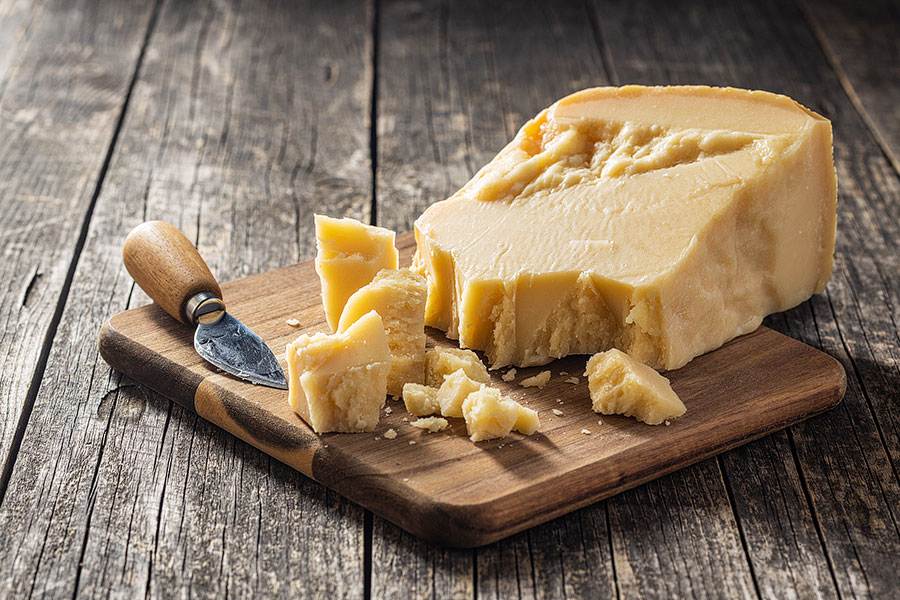
- Cow’s milk cheese made in Italy and aged at least 12 months
- Is a hard cheese
- Has a nutty and slightly salty flavor
- During the aging process the salt crystals become more evident
- Pairs well with red sauces and most Italian food
- Pairs well with almost any type of wine
- Pairs well with jam and cured meats
Manchego Cheese
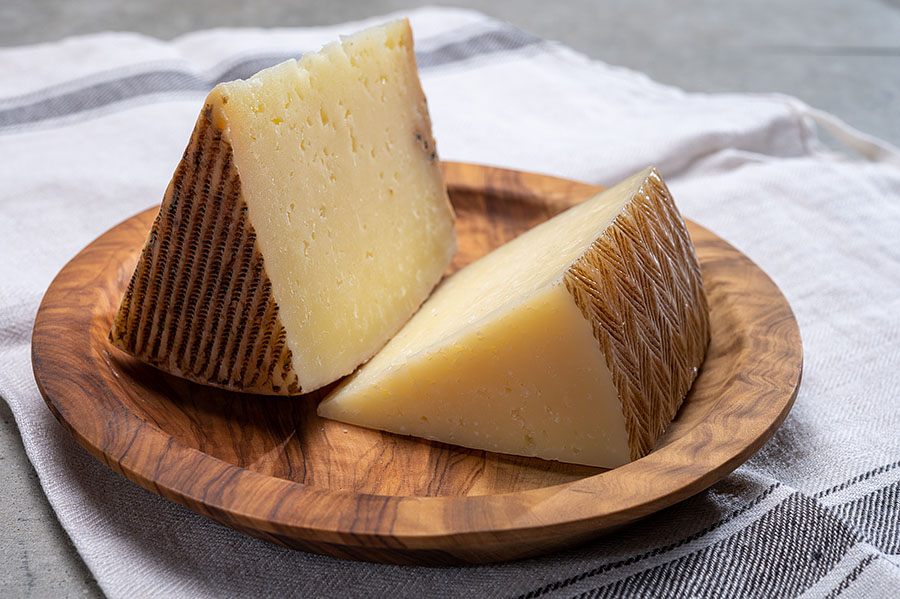
- Comes from the La Mancha region of Spain
- Is a firm sheep milk cheese
- Has a tangy, nutty flavor
- Pairs well with thin sliced ham, olives, walnuts, and marmalade
- Remove from refrigerator 30 minutes prior to slicing if you want to serve at room temperature
Gouda Cheese
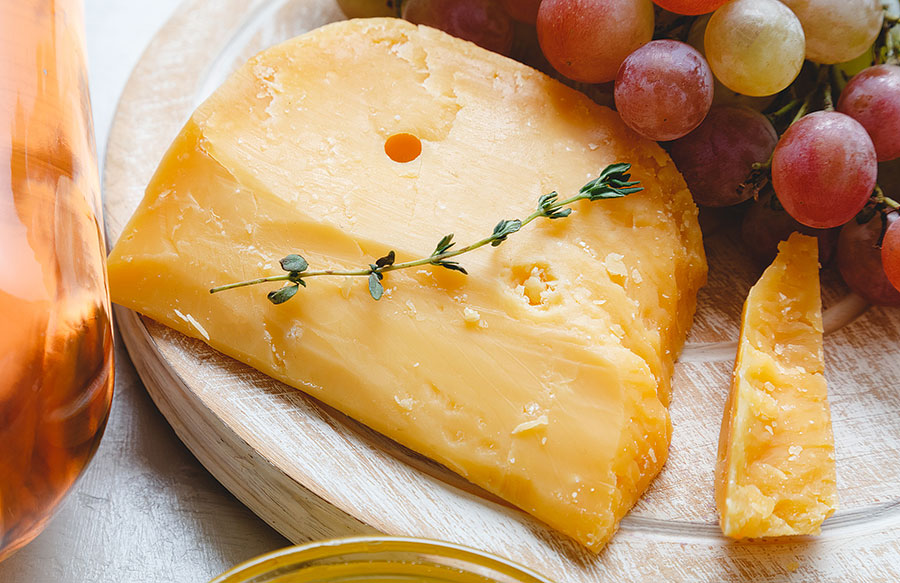
- Comes from the Netherlands
- Is a semi-hard cow’s milk cheese
- Has a buttery taste with hints of caramel
- Flavors sharpen as it ages
- Pairs well with bread, grapes, apples, pears, Turkish apricots
- Remove from refrigerator 30 minutes prior to serving
Cheddar Cheese
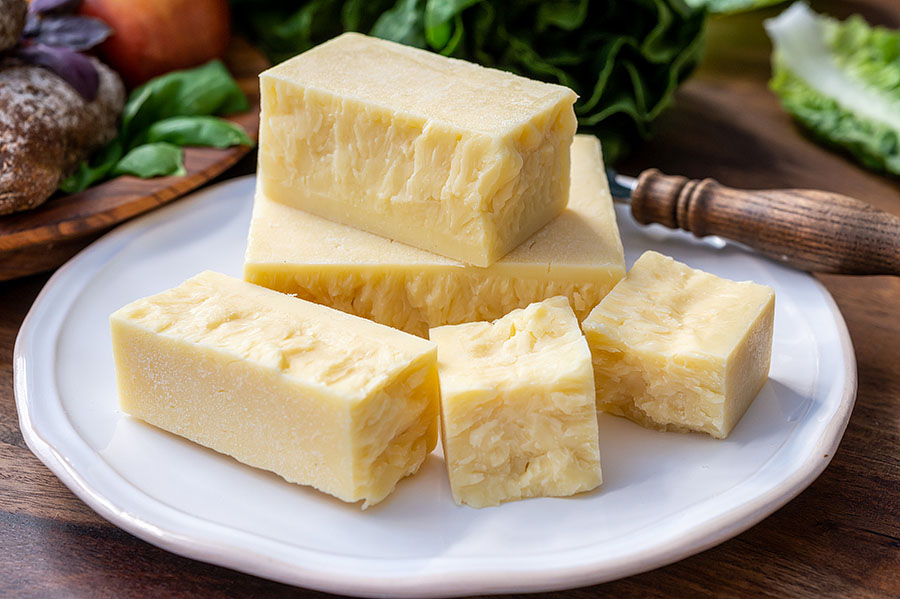
- Originated in the English village of Cheddar
- Is a hard cheeseHas a nutty, sharp taste
- Can be sweet and creamy to bitter and sharp
- Can be orange or white
- Pairs well with sliced apples and pears
- Serve with sliced salami and pepperoni
- Goes well with a sweet or fruity jam
- Remove from refrigerator 30 minutes before slicing
Mimolette Cheese
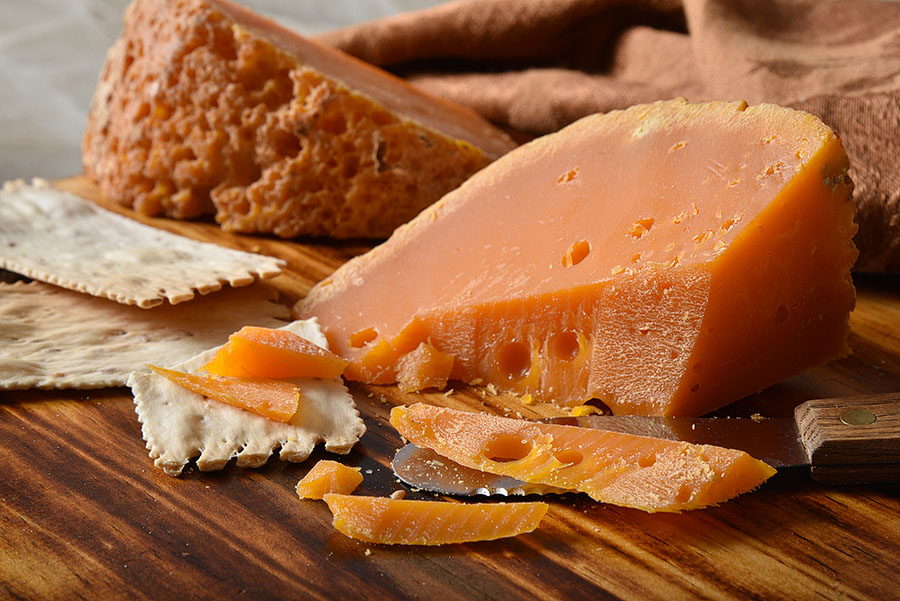
- Cow’s milk cheese made in France called Boule de Lille
- Boule meaning ball or scoop and Lille is the village or location of the cellars where the cheese was first ripened
- Is best when it is “extra-old” or aged 12-24 months
- Has an orange color
- Aged in caves or red brick cellars
Goat Cheese
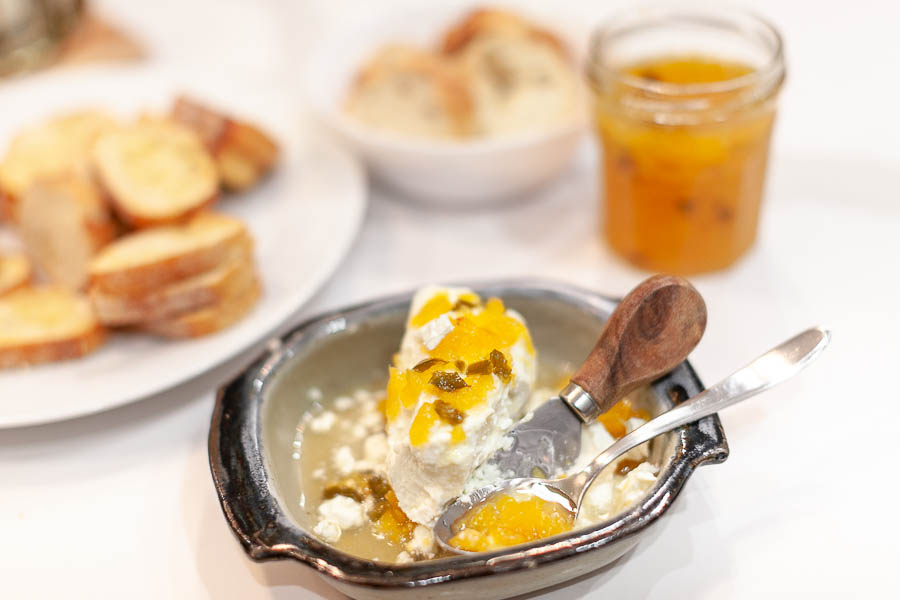
- Comes from France as the classic Chevre
- Is a soft, spreadable cheese with no rind
- Can be rolled in herbs, pepper, or ash
- Aged goat cheeses can ripen up to 12 weeks
- Pairs well with fresh figs, sliced pears, salami, bread, walnuts, jams
- Remove from refrigerator at least one hour before serving
Triple-Cream Brie
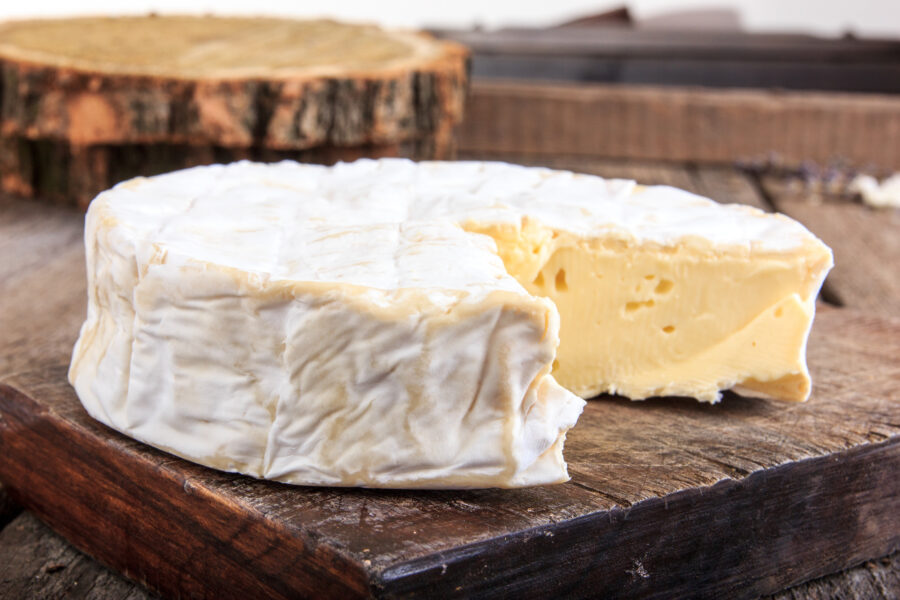
- Is a softer cheese
- Has mild enhanced with cream so butterfat content is at least 75
- Pairs well with sliced baguette, apples, grapes, berries
- Serve with any honey or jam spread
- Remove from refrigerator at least an hour before serving
- Allow to come to room temperature
What Is The Best Kind of Cheese for Charcuterie?
There really are no requirements for the best cheeses. Having said that, it’s a good idea to research different types, try them with other foods and wines, and have an idea before you pick up any cheese.
With that being said our favorite types of cheeses for charcuterie are parmesan, parmigiano, parmigiano reggiano, manchego, aged gouda, smoked gouda, mimolette, aged cheddar, and plain goat cheese topped with either our homemade fig jam or spicy pepper jam.
Best Kinds of Hard Cheeses To Use for Charcuterie
- Parmesan
- Parmigiano
- Parmigiano Reggiano
- Aged Gouda
- Asiago
- Pecorino
- Mimolette
Firm Cheese and the Best Ones To Use
- Gruyere
- Comte
- Manchego
- Colby
- Cheddar
- Aged Cheddar
The Best Types of Semi-Soft Cheese
- Havarti
- Muenster
- Burrata
- Stilton
- Blue Jack
- Blue cheese
- Gorgonzola
The Best Kinds of Soft Cheeses for Your Charcuterie Board
- Muenster
- Burrata
- Mascarpone
- Brie
- Camembert
Some of these you may be familiar with and some you may not like. That’s why it’s a good idea to try them before you serve them to your guests. If you pick the ones you love, serve them with your favorite wines, and include the right jams or spreads your charcuterie board will be a hit.
You can also mix up the tastes. Instead of an aged gouda, try a smoked gouda. If plain Havarti isn’t your thing, serve an herbed Havarti.
What Should You Serve With Cheeses?
Basically, we think most any type of jam works well with cheese. Different palattes prefer different combinations so you may have to try a few to find your favorite ones. Since we like to make our own jams, we make ones that work for us. Our choices vary depending on the time of year or what fruit is in season.
Although, that doesn’t mean we always serve the same combinations. Check these parings out to see what you think.
- Sweet fig jam with goat cheese
- Sweet fig jam with Brie cheese
- Spicy fig jam with Gouda cheese
- Apricot jam with Parmesan cheese
- Raspberry jam with Brie cheese
- Red pepper jam with goat cheese
- Orange marmalade with aged cheddar cheese
- Salty prosciutto with Havarti cheese
- Ham with feta cheese
- Pears with Stilton cheese
- Spicy orange marmalade with Manchego cheese
- Toasted baguettes with goat cheese and jams
As you can see, there are so many possibilities of the best cheese for your charcuterie board.
How Should You Begin?
When buying your cheeses, be sure to buy quality brands or brands you know. Do you have some regional cheese makers or local farmers who specialize in cheeses? If so, you might want to include those. If not, you could include cheeses from different parts of the world. Have one or two from Italy, from France, from Switzerland, or the United States.
Next, here are some other things to keep in mind about cheeses:
- Decide on four to six varieties for an interesting mix
- Buy about two ounces of cheese per person as an appetizer
- Buy five ounces per person if the cheese charcuterie board is the main entrée
- Decide whether you will serve the cheeses whole or cut into pieces
- Include knives for each cheese if they are to be served whole
- Remove cheeses from the refrigerator at least 30 minutes prior to serving
How Should You Serve Different Cheeses?
Some cheeses are best served whole, letting your guests decide how much they want. Some of these might include:
- Brie
- Goat cheese
- Mascarpone
- Burrata
- Stilton
- Blue
- Feta
- Gorgonzola
- Camembert
Because others are much easier to serve if they are cut into bite-size chunks or into slices, do that ahead of time. Some of these might include:
- Aged Gouda
- Mimolette
- Manchego
- Gouda
- Cheddar
- Havarti
- Comte
What Are Some Wines You Should Serve With Cheeses?
Finally, everyone’s palette is different and you can serve your wines of choice. The following are some of our favorites.
- Pinot Noir or Tempranillo with Manchego cheese
- Pinto Noir or Cabernet Sauvignon with Cheddar
- Pinot Grigio or Riesling or Chianti with Gouda
- Sauvignon Blanc with Brie
- Non-oaky Chardonnay, Sauvignon Blanc, Pinot Noir, or Zin with Goat cheese
What Else Should I Do?
Arrange your cheeses, jams, spreads, meats, crackers, and other foods on your charcuterie board. Once you have the board looking good, add in some fresh herbs or edible flowers to complete the overall look.
- First, set out some plates and napkins
- Next, open your wines
- Place glasses where your guests can access them easily
- Finally, enjoy your cheese charcuterie board
Finally, How Should I Store Leftover Cheeses?
- Wrap most cheeses in parchment paper or waxed paper
- Wrap goat cheese in plastic wrap
- Store in your refrigerator
- Store in a glass container with air tight lid
Don’t forget to clean your charcuterie board when you are done serving. Here is how you clean your charcuterie board.
